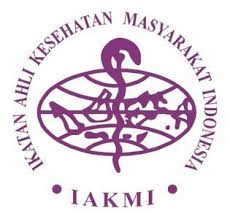Praktik Penggunaan Alat Pelindung Diri Pada Karyawan Bagian Produksi Perusahaan Konstruksi
Abstract
Abstrak
Badan Penyelenggara Jaminan Sosial (BPJS) Ketenagakerjaan mencatat, tahun 2020 terjadi 177.000 kasus kecelakaan kerja. Sepanjang Januari hingga September 2021, terdapat 82.000 kasus. Kasus kecelakaan kerja yang terjadi di perusahaan pada bulan Januari hingga Agustus 2022 sebanyak 7 kasus, 2 kasus yang terjadi pada 2022 disebabkan karena karyawan kurang fokus saat bekerja dan penggunaan APD yang tidak lengkap. Penelitian ini bertujuan untuk mengetahui hubungan antara motivasi, persepsi manfaat, dan persepsi hambatan dengan praktik penggunaan Alat Pelindung Diri. Jenis penelitian yang digunakan adalah penelitian observasional analitik dengan pendekatan cross sectional yang dilaksanakan pada bulan september 2022. Analisis univariat disajikan dalam tabel distribusi frekuensi dan analisis bivariat untuk meyelidiki hubungan yang terjadi antara variabel bebas dan variabel terikat dengan menggunakan uji chi square. Hasil uji chi square motivasi dengan praktik penggunaan APD (p <0,001), persepsi manfaat dengan praktik penggunaan APD (p= 0,035), persepsi hambatan dengan praktik penggunaan APD (p= 0,007). Kesimpulannya adalah ada hubungan antara motivasi, persepsi manfaat dan persepsi hambatan dengan praktik penggunaan APD.
Kata kunci: Motivasi, persepsi, praktik, alat pelindung diri.
Abstract
The Employment Social Security Administration Agency (BPJS) noted that in 2020 there were 177,000 work accident cases. From January to September 2021, there were 82,000 cases. Cases of work accidents that occurred at company in January to August 2022 there were 7 cases, 2 cases that occurred in 2022 were caused by employees not being focused at work and using incomplete PPE. The purpose of this study to determine the association between motivation, perceived benefits, and perceived barriers to the practice of using Personal Protective Equipment. The type of research used was an analytic observational study with a cross-sectional which was carried out in September 2022. Univariate is presented in the frequency distribution table and bivariate analysis to investigate the relationship that occurs between the independent variables and the dependent variable using the chi square. The results of the chi square test were motivation with the practice of using PPE (p <0,001), perceived benefits with the practice of using PPE (p= 0.035), perceived barriers with the practice of using PPE (p= 0.007). The conclusion is that there is a relationship between motivation, perceived benefits and perceived barriers to the practice of using PPE.
Keywords: Motivation, perception, practice, personal protective equipment




